Floor Care
Never clean or wet mop your hardwood floor with water. Do not use any wax or cleaner that must be mixed with water such as oil soap, as this may ruin your floor and result in a loss of warranty. Water can dull the finish and permanently damage the floor. Use a recommended hardwood flooring cleaner to clean your new floor.
If your floor abuts exterior doors, put outside door mats at the entrances to keep dirt and moisture from being tracked in. Inside, you may want to add an area rug to further prevent dirt and moisture from being tracked onto your hardwood floor. Don’t use rubber, foam back, or plastic mats as they may discolor the floor. To prevent slippage of area rugs, use an approved vinyl rug underlay from a reputable manufacturer. (See attachment)
Area rugs should be moved occasionally as they block sunlight, which may give the appearance of discoloring under the rug. (Mostly Oil Based Urethanes) Use floor protectors on the feet of furniture to avoid scratches. Carpet or thick rubber bottoms should be cleaned often to release trapped dirt and debris that may cause unwanted scratching. There are several sizes of floor protector pads available from your local hardware store. When moving heavy furniture or appliances, use extra caution to help avoid scratching, indentations, and gouging. Some objects may be too heavy to be moved across a hardwood floor under any circumstances.Certain types of casters on furniture may damage hardwood flooring. Barrel-type caster wheels or wide, flat glides are best for protecting your hardwood floor. If your furniture does not have the right type of caster, we recommend that you change them.
A humidifier is recommended to prevent excessive shrinkage of wood floors due to low humidity levels. Wood stoves and electric heat tend to cause very dry conditions. Contact your builder for recommendations regarding your home humidity level. Your best guide for optimal moisture content is your own hardwood floor. Watch for signs of expansion and counterbalance it with a proper amount of moisture.
In damp conditions, proper humidity levels can be maintained with an air conditioner or dehumidifier, or by periodically turning on your heating system during the summer months.
Spike or stiletto high-heel shoes, may cause denting and related damage to hardwood floors due to the extremely high compressive force they generate. Such footwear can produce dynamic loads in excess of 1000 pounds per square inch, even when worn by someone of slight or average build. We will not accept claims from damages, which arise from such exposure.
Regular dust mopping or vacuuming is an essential part of hardwood floor care. A good quality dust mop or vacuum head is the most effective tool for cleaning dust and dirt off the floor. To keep your floor looking its best, dust mop or vacuum twice a week. Dust or vacuum more often on floors with heavy traffic.
Following a regular maintenance program will preserve the life of your hardwood floor for years. However, despite all of their advantages, these new finishes will not last forever. Eventually your floor may need to be recoated. A hardwood floor should be recoated when the original finish is showing signs of wear but before it has worn down to bare wood. Bare wood will be stained by dirt and grime and will need to be re-sanded.

